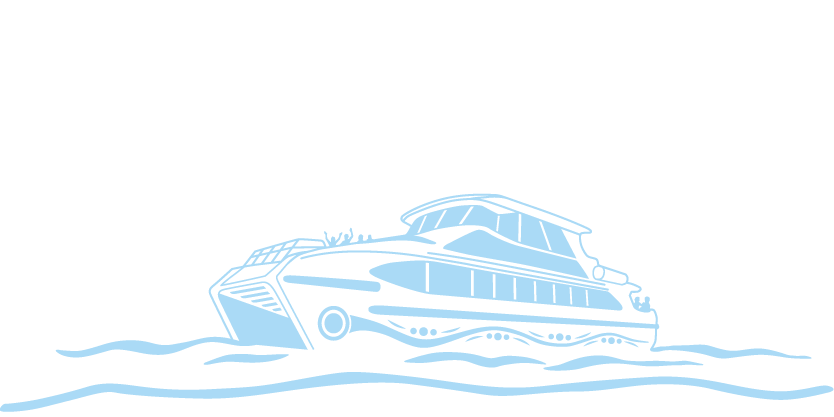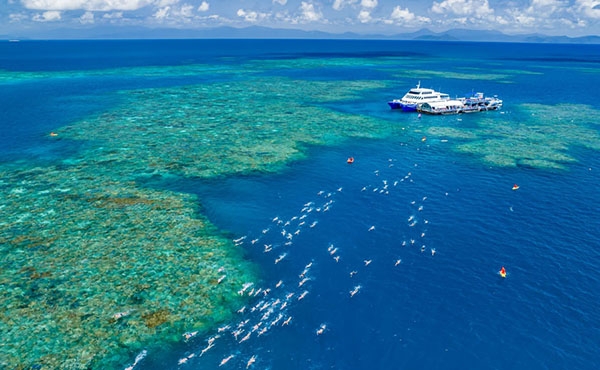The current condition of ports is assessed by the trend in port‑related activities that influence the values of the Region (such as dredging, sea disposal and land-based disposal of dredge material, and land reclamation) and the level of port activity generated (trade throughput). Dredging activities remain an essential operational requirement of operating a safe and efficient port.1407 Dredging and disposal (or placement) at ports is undertaken in two forms: capital and maintenance. Capital dredging creates new, or improves existing, channels and berths to accommodate increased traffic and larger ships (Section 5.8).1408 In contrast, maintenance dredging removes the build-up of mainly fine sediments that accumulate in existing channels and berths.1409
Since late 2015, the disposal of capital dredge material in the World Heritage Area has been prohibited (for volumes greater than 15,000 cubic metres) and capital dredging is limited to priority ports and the port of Cairns. Figure 5.17 highlights the change in annual volumes of sea disposal of capital dredge material across the ports in the World Heritage Area before and after the 2015 regulatory change. Since 2019, three key capital dredging campaigns have progressed as part of expansion projects at the ports of Cairns, Townsville and Gladstone. A total of 4.99 million cubic metres of capital dredge material was removed from the World Heritage Area, and all material from these campaigns was disposed of on land.1410
Capital dredging occurred as part of three port expansion projects
The average annual total of dredge material disposed in the World Heritage Area was approximately 1.2 million cubic metres between 2019 and 2023,1410 compared to 1.5 million cubic metres for the period between 2013 and 2016.5 Between 2019 and 2023, approximately 53 per cent of the total dredge material removed from the World Heritage Area was disposed of at sea, all of which was maintenance dredge material.
Figure 5.17
Dredge material disposal (capital and maintenance) in the Great Barrier Reef World Heritage Area, 2009 to 2023
2009 to 2016 (blue and pink): Data shown include permitted works issued under the Environment Protection (Sea Dumping) Act 1981 (Cth) and do not include dredge campaigns in internal Queensland waters. Disposal within port limits (including port exclusion areas; or operational areas) is included. The data informed annual reports to the International Maritime Organization.1207 2017 to 2023 (red): Data shown include actual volumes reported to the Queensland Department of Transport and Main Roads by individual port authorities. It includes disposal within port limits (including port exclusion areas) and excludes dredge campaigns in internal Queensland waters. Sources: Far North Queensland Ports Corporation Limited (trading as Ports North), Port of Townsville Limited, Gladstone Port Corporation Limited and North Queensland Bulk Port Corporation Limited (2023)1410 and Australian Department of Environment and Energy (2018)1411
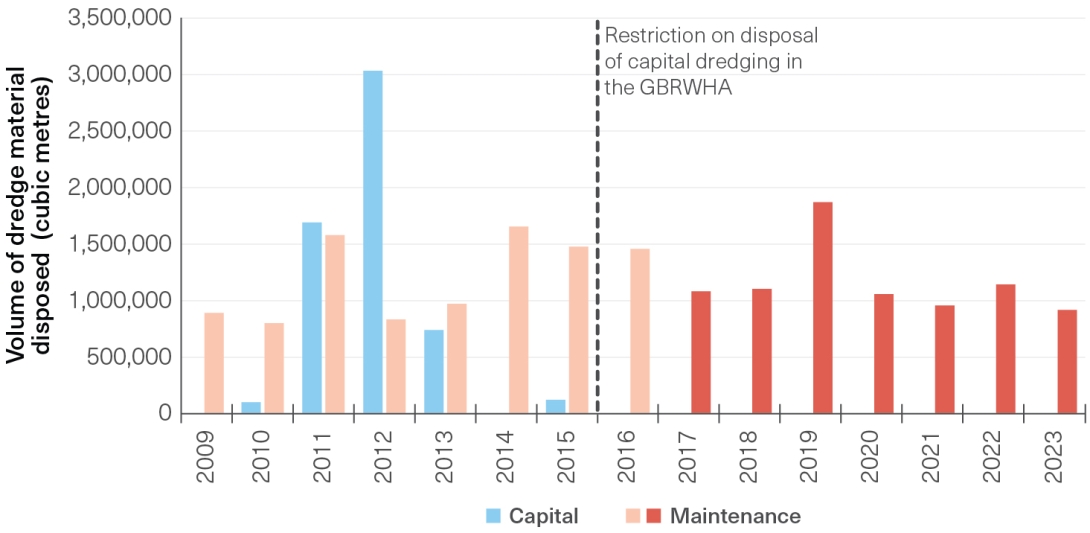
The total amount of reported maintenance dredge material removed from the World Heritage Area between 2019 and 2023 was approximately 1.5 times that for the preceding 5 years (Figure 5.18).1410 Maintenance dredging requirements can be driven by local port characteristics. The ports of Cairns and Townsville are both shallow harbours and have higher levels of sedimentation due to natural sediment transportation and coastal storm events. Acute weather events, such as significant rainfall, can also influence maintenance dredging requirements. In 2019 and 2020, the relatively large maintenance dredging campaigns at the port of Townsville related to the 2019 flood event in this area, in which approximately 1.8 metres of rain fell in 10 days 771. In the period between 2019 and 2023, approximately 6.2 million cubic metres of maintenance dredge material was removed from the World Heritage Area. The majority of this (92 per cent) was from Cairns, Townsville and Gladstone, with the remaining volumes from Hay Point and Mackay. No maintenance dredging was reported for the same period at minor ports.1410
Figure 5.18
Maintenance dredging volumes in the Great Barrier Reef World Heritage Area, 2004 to 2023
The map shows the 12 ports in the Region. The graphs show volumes of material dredged for maintenance purposes. Source: Far North Queensland Ports Corporation Limited (trading as Ports North), Port of Townsville Limited, Gladstone Port Corporation Limited and North Queensland Bulk Port Corporation Limited (2023)1410
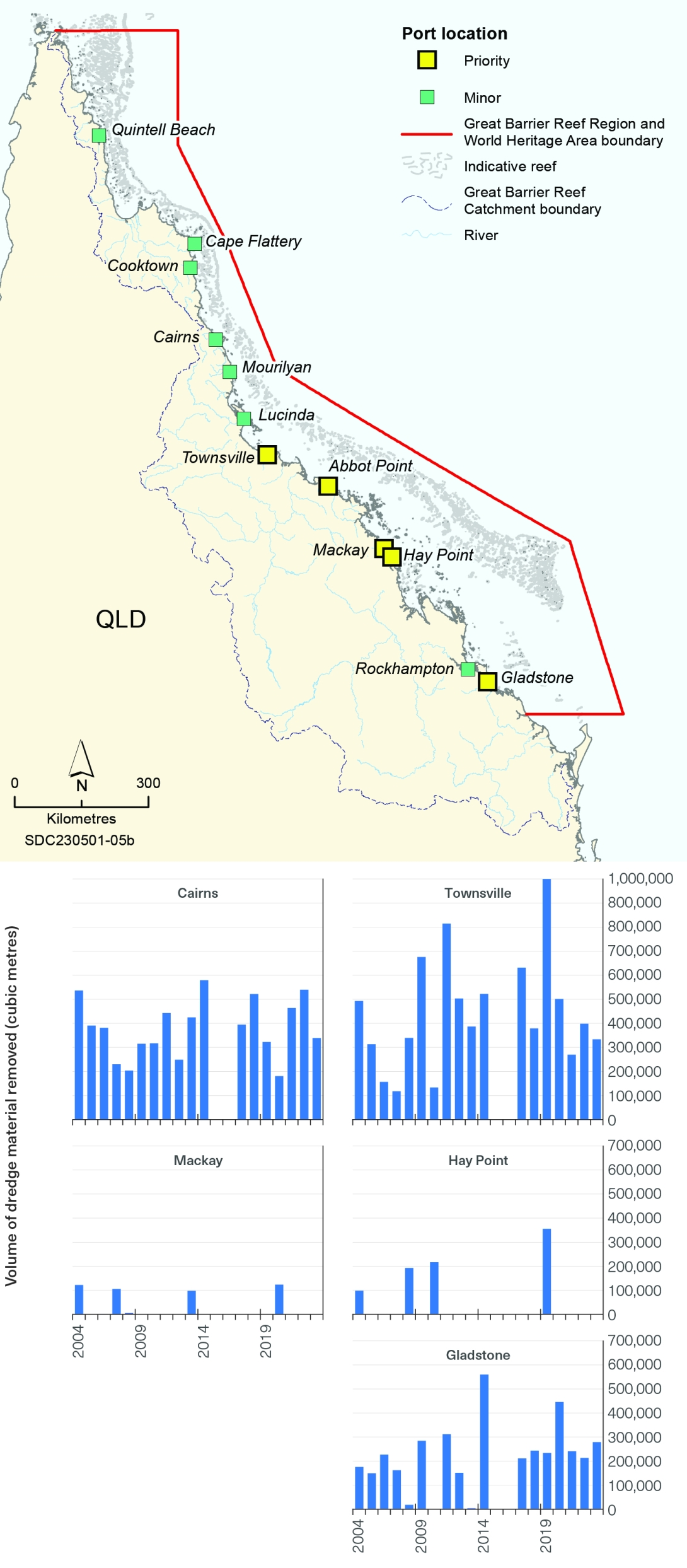
Land reclamation occurs when an area is restricted from tidal influence and converted into land above the high water mark. Since 2019, approximately 30 hectares (0.3 square kilometres) of new land has been created at the Port of Townsville from the adjacent seabed.1410 This land reclamation represents the only known spatial extent of new land created across the Region’s 12 ports. While capturing and reporting on this land extension represents an improvement since 2019, a historical baseline of land reclaimed in the Region since European settlement for port and other purposes (such as other coastal development; Section 6.4) remains a knowledge gap.
30 hectares of new land has been created at the Port of Townsville
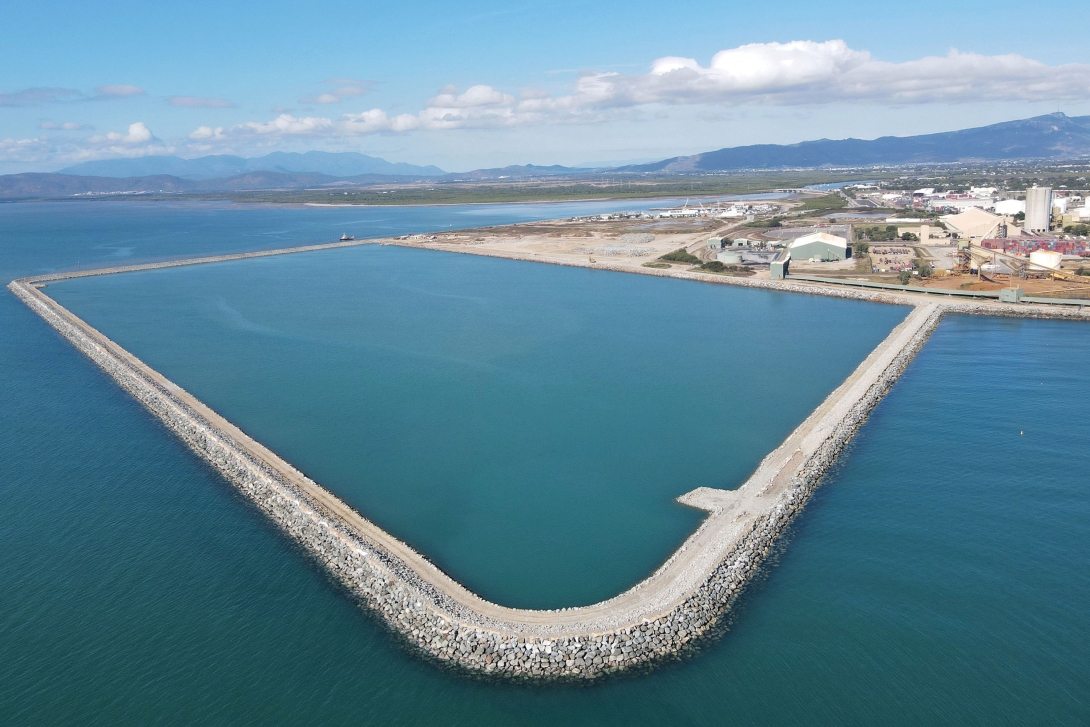
Management | Port authorities and managing agencies continue to implement the significant reforms introduced in 2014 under the Sustainable Ports Development Act 2015 (Qld) (the Sustainable Ports Act),1412 the Maintenance Dredging Strategy for the Great Barrier Reef World Heritage Area Ports (the Maintenance Dredging Strategy)1408 and the Dredging and Dredge Spoil Material Disposal Policy (the Dredge Policy)1413. These reforms reflect actions under the Reef 2050 Plan.1414 The reforms seek to balance the economic growth of ports with environmentally sustainable use through systematic planning, policy, monitoring and reporting of maritime port infrastructure. Key actions from these reforms are now embedded in the planning and development processes for ports. The effectiveness of these changes is addressed in Chapter 7.
The Sustainable Ports Act applies to all 12 ports in the Region with an objective to provide for the protection of the World Heritage Area through managing port-related development in and adjacent to the area. Since 2019, all four priority ports have made master plans, as have some minor ports, as required under the Sustainable Ports Act.1415,1416,1417,1418,1419 Each priority port must also adopt a port overlay, which is a statutory planning layer that fosters and implements ecological sustainable development principles and guides port development. Port overlays have been adopted for the ports of Townsville and Gladstone.1420,1421
All dredging and material disposal activities in the Region’s ports are managed under both Queensland and Commonwealth legislation (Chapter 7).11 Australia is a signatory to the 1996 Protocol to the Convention on the Prevention of Marine Pollution by Dumping of Wastes and Other Matter, 1972 (the London Protocol).1207 The Environment Protection (Sea Dumping) Act 1981 (Cth) implements Australia’s obligations under the London Protocol to prevent marine pollution by dumping of wastes and other matter.

